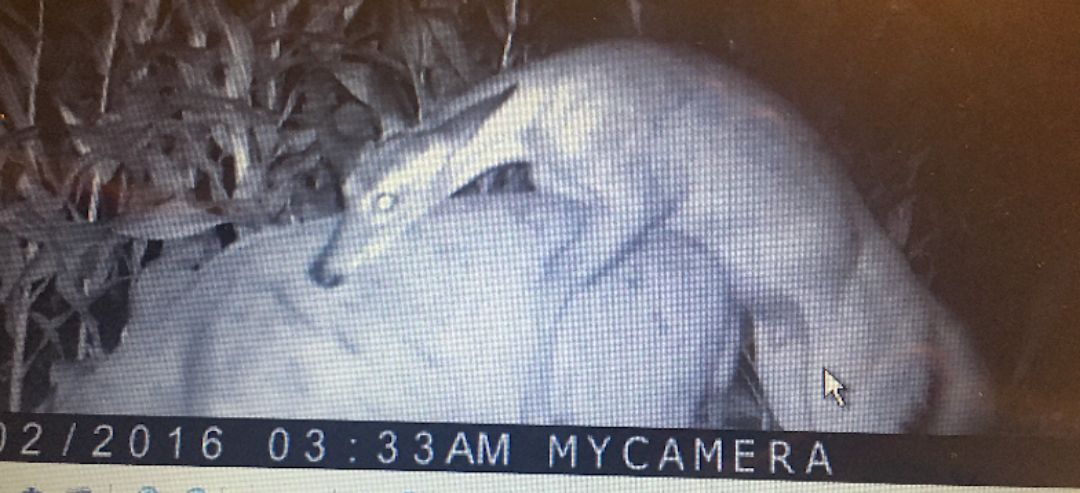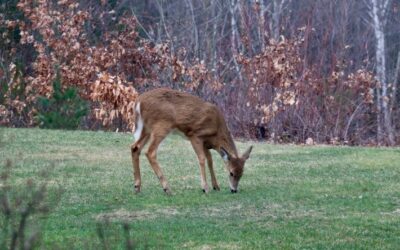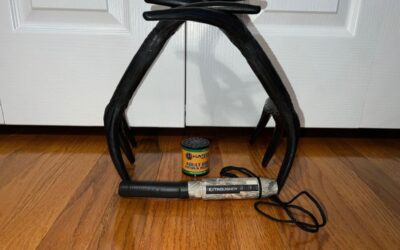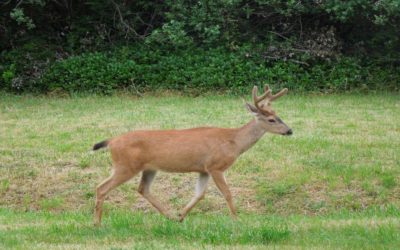This article may contain affiliate product links. I may receive a commission from sales. However, there is no extra cost to the buyer for using my affiliate link.
Using my affiliate links help support The Whitetail Teacher and allow me to deliver more content to help you become a better whitetail deer hunter.
As a whitetail deer hunter, the breeding season, often referred to as the rut, is by far the most action-packed and exciting time of the year. Mature bucks will be fighting, chasing, and making all kinds of stupid mistakes just to be able to breed a doe.
This article is not about the strategies, tactics, or tips on how to be successful during the whitetail breeding season. Rather, this is article is to help educate you about when the deer breeding season is and how you can identify it while hunting.
The Actual Driving Factor of the Whitetail Breeding Season
Photoperiod Breeding
The rut is driven by something called photoperiod. This is just a fancy way of saying that the whitetail breeding season is driven by the number of daylight hours.
Whitetail deer are short-day breeders and tend to breed when the daylight hours are starting to dwindle down. On Average, midwestern states tend to be in the full swing of the rut by November 10-15th depending on the area.
Signs Indicating the Breeding Season
One way that bucks create signs of the rut is by making buck rubs. It is said that a mature buck can make up to 1,000 or more scrapes in a given year. These rubs will be directly related to the whitetail breeding season and a buck’s territory that they would consider their home range. The most dominant buck starts to make rubs as they are anticipating the rut and establishing a dominant hierarchy among the other bucks in the herd.
This is a great indicator for you as a hunter to understand the phases of the breeding season that are happening on the property that you are hunting.
Scent Glands
Scent glands are another way that deer species will communicate with each other. These glands help deer communicate about the rut. Bucks will leave their tarsal gland (located on the hind leg) scent in their scrapes, they will leave their pre-orbital gland and forehead gland scents on their rubs and scrapes. This tells other yearling bucks, young males, and any other bucks in the area that this area is already a buck’s territory.
Whitetail bucks also participate in sparring matches to establish a pecking order in the deer herd. These buck fights will also be based on the sexual maturity of the bucks. Buck fawns will not challenge a seven-year-old mature buck because they know that they are lower in the pecking order. Deer mate based on that pecking order which also plays a part in bucks’ home ranges.
Female Deer’s Body language
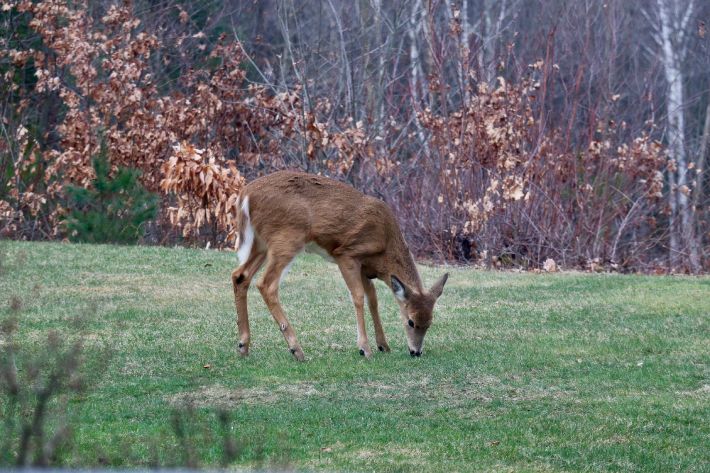
The other beauty of the rut is that female deer will give you a great indication of what stage of the rut the deer are in currently.
If a doe runs away from a buck that has his nasal gland all up in her business, there is a good chance that the majority of the female deer are not ready to be bred. If the doe stays still and is not running away, then the deer is most likely to be ready to breed with a buck.
These are just a few of the key factors that you can look for as a hunter to help yourself get a better grasp on when the peak of the rut actually takes place.
Another key concept to understand as a whitetail deer hunter is that mature bucks will be a lot more aggressive, active, and willing to accept a challenge. All these activities increase the deer activity in deer populations and you will get more shot opportunities during the deer rut.
The Stages of the Deer Breeding Season
1. The Chase
The chase is the time of the year when whitetail bucks are becoming less friendly with each other and are getting ready to start mating. However, the female deer are not ready to breed yet. This is commonly referred to as the pre-rut.
This caused the young deer to chase the female deer. The reason that I say young deer tend to do most of the chasing during this period is that the mature bucks have been around long enough to know that by this time of the year the does are still not ready to breed.
Often, more mature bucks will make buck scrapes, rubs, and scent-check bedding areas to see if there is a receptive doe in the area. If there is a receptive doe that is ‘hot’, then the buck will chase her until the next stage of the process.
2. The Lock Down Phase
The lockdown phase happens directly before a buck breeds a doe. This is not directly related to the day on a calendar. It is more related to the time frame in which a doe comes into heat and is ready to be breaded by a buck.
I want to state that lockdown normally takes place at the peak rut time. This is because, at the height of the deer mating season, most females are ready to breed which means that the bucks, including young bucks, are locked down with a receptive doe.
When this happens, bucks do not continue to search for new receptive females.
3. The Breeding
After the lockdown phase, the buck and doe will mate. There is little to be said about the action of mating. I would say that anyone that is old enough to comprehend this article is probably familiar with the action of mating.
However, it is important to note that at this point starts the gestation period is done successfully. The average gestation period for whitetail deer is 201 days. Often times deer fawns are born in the early spring, yet some will be born a bit later.
4. The Late Rut
The late rut or second rut is an interesting topic because not every property or area will have a late rut. The late rut happens when a doe comes into their heat later than the rest of the deer herd.
This tends to take place in early winter. There are two reasons that a late rut may happen. One: A doe does not get bread during her first heat. A female deer will come into heat again approximately 20-30 days after her first heat is over. Two: Some female deer just come into their receptive period later than the rest of the herd. There is no true way to tell if this is happening unless there is a pattern of one doe coming into heat way later than the rest of the female deer.
What can Affect the Whitetail Rut?
There may be some misconceptions about what factors can influence the timing of the rut. Cold weather does affect deer movement; however, it does not speed up the rutting process.
As I mentioned above the rut is strictly based on the photoperiod which refers to the day length. Severe winters may affect the nutrition level of the deer and this may affect the testosterone levels and antler growth of bucks but it will not hinder the breeding season.
Habitat Management
Poor habitat may affect the deer herd and how many bucks and does are in a specific square mile. If this is the case in the area that you hunt, there is not much you can do except try to improve the habitat that you hunt or find a new property to hunt.
Having good habitat quality is not something that is specific to the rut but rather deer reproduction, fawn survival rate, and your overall hunting season.
Do Yearly Fawns Participate in the Rut?
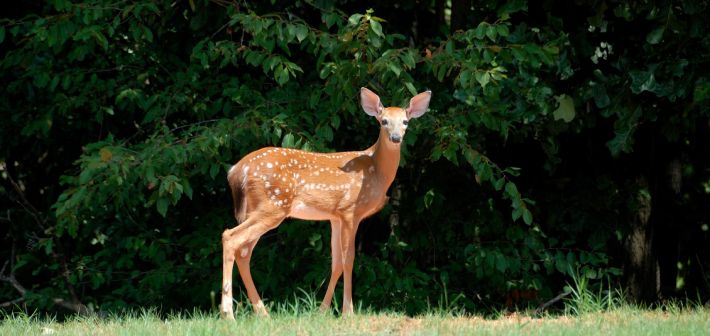
Doe fawns tend to be left out of the rut their first fall. This is because they are not developed enough to carry another fawn.
Occasionally, young females that are deer will participate in the late ruts if they have reached roughly 60-70 pounds of weight and come into heat during the winter months. I would not bet on your yearling fawns to be bread.
Conclusion
The whitetail deer breeding season is the most exciting time of the year to be a whitetail hunter. There are certain scouting tactics that you can use to help indicate when the rut is happening and which stage of the rut the deer are currently in.
It is important to realize that the whitetail rut happens in the middle of the hunting season and is one of the best times to take off work, school, or any other responsibilities that you may have. I always like to hunt the pre-rut and the beginning of the rut.
This has been my strategy because I love archery hunting more than gun hunting. This means that if I do not hunt during the gun season, I am not upset about it.
You may also be interested in a free E-book to help you create a personal hunting game plan or a Free PDF that explains the 5 most important fundamentals for whitetail deer hunting.
Thank you for visiting The Whitetail Teacher! If you enjoyed this post, make sure to share it with a friend.
Learn, Plan, Execute
The Whitetail Teacher

